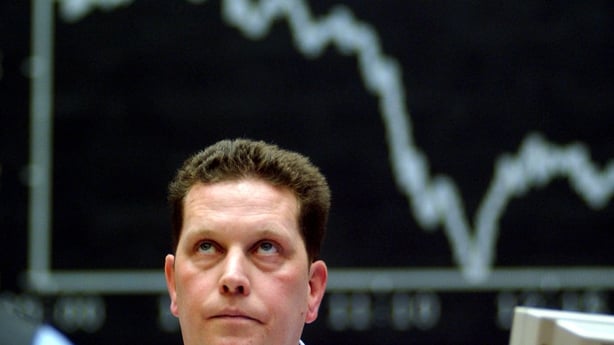Global stock markets are on their shakiest footing in years. Investors are fleeing stocks and running to safe-havens like bonds and gold, driven by concerns about economic growth and the effectiveness of central banks' policies.
At the same time, tumbling energy prices are upending the economies of oil-producing countries, further slicing into global economic growth.
Only six weeks ago cheap oil prices were still expected to cushion the global economy, and the Federal Reserve's decision in December to raise interest rates for the first time since the end of the financial crisis in 2008 was widely seen as a vote of confidence in the world's largest economy.
In addition to the fall in US stock markets, major stock indexes worldwide have also been hit hard, despite efforts by the Bank of Japan and the European Central Bank to spur growth through lower interest rates.
Large institutions and sovereign wealth funds, who borrowed in euro and yen, have been selling riskier assets, and are now buying back those currencies, undermining central bank efforts.
What is the biggest reason for the selloff?
The slump in equity prices which began late last year has deepened as banks grapple with negative interest rates in parts of Europe and Japan and the flattening of the US Treasury yield curve.
Negative interest rates on central bank deposits and on government bond yields undermine the traditional ability of banks to profit from the difference between borrowing costs and lending returns.

With a decline of 18% on the year, S&P 500 financials are by far the worst performing sector in 2016.
While the Federal Reserve has avoided introducing negative rates on reserves, in Congressional testimony on Thursday, Fed Chair Janet Yellen told lawmakers that the Fed would look into negative interest rates if needed. "I wouldn't take those off the table," she said.
Wasn't energy the problem?
Higher levels of US oil output, thanks to fracking technology, along with over-production by Saudi Arabia, contributed to a world-wide oil glut, sparking a steep fall in energy and other commodity prices at the start of last year.
At $27 a barrel, oil prices are now near 13-year lows and some analysts say they expect to see prices drop further. Tumbling oil prices resulted in sharp contractions in the economies of oil-producing countries, and pushed up yields on corporate debt, leading to defaults in the energy sector.
What's next for the Fed?
Markets now do not expect the Fed to go ahead with its planned interest rate rises this year. The federal funds futures market now shows traders are not expecting the Fed to raise rates until at least February of next year. At one point this week, futures contracts were even pricing in a slight chance of a rate cut this year, and investors said some of the rally in gold prices resulted from the possibility of a rate cut.

The move in fed funds futures has been accompanied by a rapid decline in the spread between short-dated and long-dated US Treasury securities. The difference between the 2-year Treasury note yield and 10-year note yield has narrowed to 0.95 percentage points, the tightest it has been since December 2007. The flattening of the yield curve has often preceded recessions in the past.
The narrowing yield curve spread shows investors are less confident of economic growth, even though Yellen told Congress on Wednesday that US economy looks strong enough that Fed may stick to its plan to gradually raise interest rates.
When will the fall in stocks end?
There are few signs yet that investors are dumping their holdings wholesale, typically a mark of a market bottom, said Alan Gayle, director of asset allocation at RidgeWorth Investments in Atlanta. "It still seems to be focused on specific issues, whether it's credit or it's oil. But clearly there is a more defensive tone that the market is taking and we're watching for signs of capitulation," he said.
Similarly, Credit Suisse noted that hedge funds have been selling in February, but the scope of that selling "lacks the much anticipated capitulation trade that would signal a bottom."
Credit Suisse also noted that macro-focused hedge funds have built up large US equity short positions which have been a decent indicator of market direction in the past.
Even if the severity of the selling tapers off, 2016 will likely continue to be a bad year for stocks. The S&P 500 stock index is down approximately 10.3% for the year to date, while the Nasdaq Composite is down more than 15% over the same time.
Analysts said that although the US is seeing good job numbers, the general feeling is that the US economy is nearing a peak.

